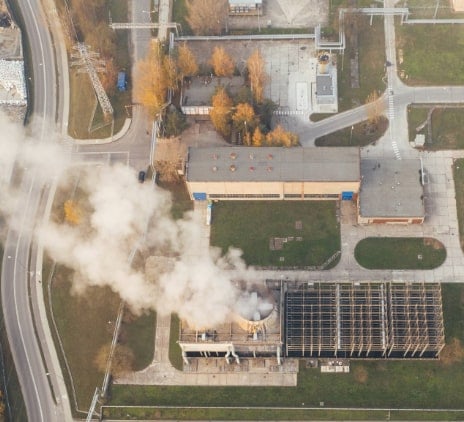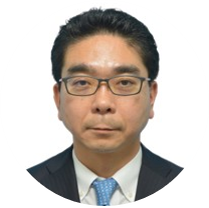-
Accounting Advisory
Our accounting advisory team help businesses meet their complex financial reporting requirements. The team can support in applying new financial reporting standards, IFRS/ US GAAP conversions, financial statement preparation, consolidation and more.
-
Payroll
Our team can handle your payroll processing needs to help you reduce cost and saves time so that you can focus on your core competencies
-
Managed accounting and bookkeeping
Outsourcing the financial reporting function is a growing trend among middle market and startup companies, as it provides a cost-effective way to improve the finance and accounting function. Our team can help with financial statement preparation, consolidation and technical on-call advisory.
-
Accounting Advisory
Our team helps companies keep up with changes to international and domestic financial reporting standards so that they have the right accounting policies and operating models to prevent unexpected surprises.
-
Crypto Accounting Advisory Service
Our team can help you explore appropriate accounting treatment for accounting for holdings in cryptocurrencies, issuance of cryptocurrencies and other crypto/blockchain related accounting issues.
-
ESG Reporting and Accounting
As part of our ESG and Sustainability Services, our team will work with you on various aspects of ESG accounting and ESG reporting so that your business can be pursue a sustainable future.
-
Expected Credit Loss
Our team of ECL modelling specialists combine help clients implement provisioning methodology and processes which are right for them.
-
Finance Transformation
Our Finance Transformation services are designed to challenge the status quo and enable your finance team to play a more strategic role in the organisation.
-
Managed Accounting and Bookkeeping Services
Outsourcing the financial reporting function is a growing trend among middle market and startup companies, as it provides a cost-effective way to improve the finance and accounting function. Our team can help with financial statement preparation, consolidation and technical on-call advisory.
-
Business Tax Advisory
Our business tax team can help you navigate the international tax landscape, grow through mergers and acquisitions, or plan an exit strategy.
-
Corporate Finance
Our corporate finance team helps companies with capital raising, mergers and acquisitions, private equity, strategic joint ventures, special situations and more.
-
Financial Due Diligence
From exploring the strategic options available to businesses and shareholders through to advising and project managing the chosen solution, our team provide a truly integrated offering
-
Valuations
Our valuation specialists blend technical expertise with a pragmatic outlook to deliver support in financial reporting, transactions, restructuring, and disputes.

-
Sustainability with the ARC framework
Backed by the CTC Grant, businesses can tap on the ARC Framework to gain access to sustainability internally, transform business processes, redefine job roles for workers, and enhance productivity. Companies can leverage this grant to drive workforce and enterprise transformation.

-
Business Tax Advisory
Our business tax team can help you navigate the international tax landscape, grow through mergers and acquisitions, or plan an exit strategy.
-
Corporate Tax Compliance
Our corporate tax teams prepare corporate tax files and ruling requests, support you with deferrals, accounting procedures and realise tax benefits.
-
Tax Governance
Our Tax Governance Services are designed to assist organisations in establishing effective tax governance practices, enabling them to navigate the intricate tax environment with confidence.
-
Goods and Services Tax
Our GST team supports organisations throughout the entire business life-cycle. We can help with GST registration, compliance, risk management, scheme renewals, transaction advisory and more.
-
Transfer Pricing
Our Transfer Pricing team advises clients on their transfer pricing matters on and end-to-end basis right from the designing of policies, to assistance with annual compliance and assistance with defense against the claims of competing tax authorities.
-
Employer Solutions
Our Employer Solutions team helps businesses remain compliant in Singapore as well as globally as a result of their employees' movements. From running local payroll, to implementing a global equity reward scheme or even advising on the structure of employees’ cross-border travel.
-
Private Client Services
Our private client services team provides a comprehensive cross section of advisory services to high net worth individuals and corporate executives, allowing such individuals to concentrate on their business interests.
-
Welfare and benefits
We believe that a thriving team is one where each individual feels valued, fulfilled, and empowered to achieve their best. Our welfare and benefits aim to care for your wellbeing both professionally and personally.
-
Career development
We want to help our people learn and grow in the right direction. We seek to provide each individual with the right opportunities and support to enable them to achieve their best.
The Asia Pacific (APAC) region is ageing more rapidly than any in history[1]. And Grant Thornton’s International Business Report (IBR) reveals that business leaders in the region view ageing as the most significant threat to their businesses over the next five years. It will reduce the supply of labour, increase wages, and potentially reduce competitiveness. But it isn’t all bad news. Health and medical technology (medtech) businesses are leading the way in identifying rich opportunities in this disruption.
Ageing population tips the balance in APAC
Globally, nearly two billion people are expected to be over 60 by 2050 – triple the figure in 2000. The OECD predicts that the world’s old-age support ratio (the number of people aged 20 to 64 per every person aged over 65) will reduce from 4.2 in 2008 to 2.1 by 2050. In the APAC region, things are even more marked. In China the old-age support ratio will plummet from 7.9 to 2.4 by 2050. This is a situation made worse by the country’s former “one-child policy”, meaning many Chinese families have a 4-2-1 structure (four grandparents, two parents, one child).
These changes are not, however, happening evenly across the region. North Asia is ageing more rapidly than the south. To the north, Japan has the oldest population in the world, with 26.3% of its citizens over 65, according to the World Health Organisation (WHO)[1]. The OECD predicts this will only get worse, with the country’s old age support ratio falling to 1.2 by 2050. In Australia, the proportion of over 65s is expected to peak in 2026, with the cost of care rising through that period and around one in four of the population over 75 by 2025.
Further south, India presents a different demographic challenge. Here, 65% of the population is under 35, and the country is keen to take advantage of this so-called “demographic dividend”. Some economists predict that India will be the third largest economy in the world by 2050. But even such relatively “young” economies are not exempt from the impact of ageing over the longer term. The OECD predicts India’s old age support ratio will also fall from 11.2 to 4.5 by 2050.
What are the risks for the healthcare sector?
Ageing in APAC is putting pressure on health budgets throughout the region. The tax base to fund healthcare services for the elderly could disappear within 15 years. In Singapore, for example, health inflation is running at 9.6%, and health currently counts at 12.6% of its entire spend.
Cost pressures and local country dynamics are forcing a lot of change in the APAC region’s aged care. The Australian economy, for example, is at a crossroads in its aged healthcare provision with less government funding dedicated to traditional care models already at capacity.
The introduction of Consumer Directed Care has transformed home care. Darrell Price, Principal and National Head of Health & Aged Care at Grant Thornton Australia’, explains: “Consumers have more choice of providers, services and pricing models and competition is mounting.”
Meanwhile, as competition has increased, scrutiny of the quality of care has resulted in a Royal Commission putting the sector under pressure and investigating care quality in residential facilities, retirement living and in-home care. With squeezed margins, a lot of the not-for-profit organisations are struggling.
Another challenge for the region is the supply of skilled workers to service expanding demand in the healthcare sector. Shoichiro Mitani, partner at Grant Thornton Japan, says: “In Japan, a shortage of skilled workers has become a serious problem across a range of industries, and is particularly acute in aged care and medical services. Ageing populations and declining birth rates in other countries will also make it extremely difficult for Japan to recruit exceptional international workers.”

Another challenge for the region is the supply of skilled workers to service expanding demand in the healthcare sector. Shoichiro Mitani, partner at Grant Thornton Japan, says:
“In Japan, a shortage of skilled workers has become a serious problem across a range of industries, and is particularly acute in aged care and medical services.
Ageing populations and declining birth rates in other countries will also make it extremely difficult for Japan to recruit exceptional international workers.”
Just as businesses across APAC face up to the potential challenges presented by this ageing population, it is clear there are significant opportunities for businesses in the region. Far from a gloomy scenario, as APAC ages faster than other global regions, so there is the potential for businesses to develop businesses and solutions that can later be exported globally.
Broad opportunities for healthcare investors
Despite the headwinds, the opportunities for lending to the health and aged care industry in the region are broad. Almost half the participants at a recent Grant Thornton Banker’s Boot Camp in Australia nominated the health and aged care sector as having the most robust prospects for future lending growth.

Darrell Price, Principal and National Head of Health & Aged Care at Grant Thornton Australia, comments:
“There is increasing interest from the private equity sector in aged care. In the process of increasing competition and diversification of the market, private equity firms have realised there is money to be made in consolidations.”
A lot of smaller players, especially in rural areas, are throwing up their hands and private equity firms are looking to mop them up. Those transactions are beginning to roll through. We’ll start to see a lot of the small operators merge into larger groups to create scale.”
Some investment opportunities are born out of new trends and new business models. As Price explains, in the US, “university hospitals are creating hub and spoke facilities, building little day surgeries and overnight stay surgeries providing basic services, with the main hospitals servicing more complex procedures.”
“This trend is picking up in Australia, with private investors building day hospitals. Meanwhile, Japan is also looking at how they invest in these property developments with a view to bringing in specialists and tenants that can provide the service offering.”
Similar trends can be seen in China. As part of its National Planning Guideline for the Healthcare Service System (2015–2020)[2], the Chinese government is seeking to provide a higher number of community-based senior care and assisted living services. This will both improve the provision for the ageing population and alleviate the burden on large-scale hospitals.
As one of the countries facing the most serious ageing crises, Japan has naturally seen changes to traditional residential care models. Conventional retirement accommodation for older adults used to be less like homes and more like medical facilities, says Mitani. “Elderly residences with services are now more commonly being promoted. Although care staff are there during the day, attendant services and day care services are provided by external providers and older adults can choose which services they sign-up for, depending on the care they need.” This is not a cheap option, however, as rents are typically high. Providing affordable accommodation and care to elderly patients on lower incomes remains a challenge for dynamic businesses to grapple with.
The power of medtech to cut the cost of care
There are huge opportunities for businesses to harness technology in the delivery of health and aged-care services. Medtech is rapidly developing, with doctors providing consultations through distributor technologies in the home via mobile devices.
In Australia, it is largely bigger players that are investing in this technology, with telecoms giant Telstra a major investor in medtech, health services and robotics. According to Price, “a patient in one location can be operated on 1,000 kilometres away using robotic operating tools with localised nursing support.” Wearable devices and related technology are being used to monitor blood glucose, blood pressure and temperature in real time and provide early indicators of problems such as heart attacks.
The Association of Southeast Asian Nations (ASEAN) countries – and Thailand in particular – is a hotspot for this electronic health and medtech boom. Ian Pascoe, managing partner of Grant Thornton Thailand, says:

“It is a stand-out sector in terms of investment, with huge opportunities between software firms and medical health groups. In countries such as Indonesia, Vietnam and Thailand, proper medical records are sparse.
There is a desire to change this and introduce electronic records to improve both healthcare and accountability. Some companies, even those unrelated to the medical sector, are seeking to partner with non-governmental organisations to fund the development of e-health records for medical companies.”
Businesses can unlock growth through cross-region collaboration
Medtech isn’t the only area where cross-region cooperation will be key to unlocking growth opportunities. APAC has an extraordinary capability for collaboration and sharing funds, skills and services across the region. This presents diverse opportunities for businesses.
As Price explains, “we’re seeing Australian providers look to deliver services across Asia. And institutional investors from elsewhere are looking to invest in the Australian market to learn what we do and how we do it, with the view to exporting these ideas back to other countries.”
He cites the example of Bolton-Clark, a large Australian not-for-profit organisation, that is working with provincial Chinese governments in southern China to advise on the development and management of aged-care facilities. “They've done it very effectively,” says Price. “And the model is being tested elsewhere. Some facilities are already completed and operational. Bolton-Clark takes a management lead and provides expertise, training, education and some clinical oversight on how services are set up. The Chinese are keen to pay and train people to deliver and develop the service.”
Alongside Grant Thornton Thailand and Grant Thornton Japan, Price has also been working with a large Asian insurer looking at ways to vertically integrate its investments to develop large aged-care facilities. When consumers get to an age where they want to start drawing down on their insurance, the insurer places them into their facilities to create synergies.
“We've been working with our colleagues at Grant Thornton Thailand to help a client looking to take Japanese capital, Australian expertise and Thai property and development capability to build integrated facilities. The Grant Thornton network allows us to connect with our colleagues to assist clients with international growth opportunities.”
Seize the opportunities as demand continues to grow
With APAC’s ageing population ever increasing, health and medtech businesses are leading the way in providing cutting-edge solutions to the ageing crisis. This challenge is not limited to APAC and the rest of the world is watching. How the region approaches caring for the elderly and rebalancing its economies will inform other regions and sectors. The one certainty is that demand will only grow, creating rich opportunities for business disruptors.
To find out how your business can lead the way and create innovative solutions to these pressing social challenges, contact your local Grant Thornton business advisor or send us an email at enquiries@sg.gt.com
[1] Live Long and Prosper: Aging in East Asia and Pacific, World Bank 2016

